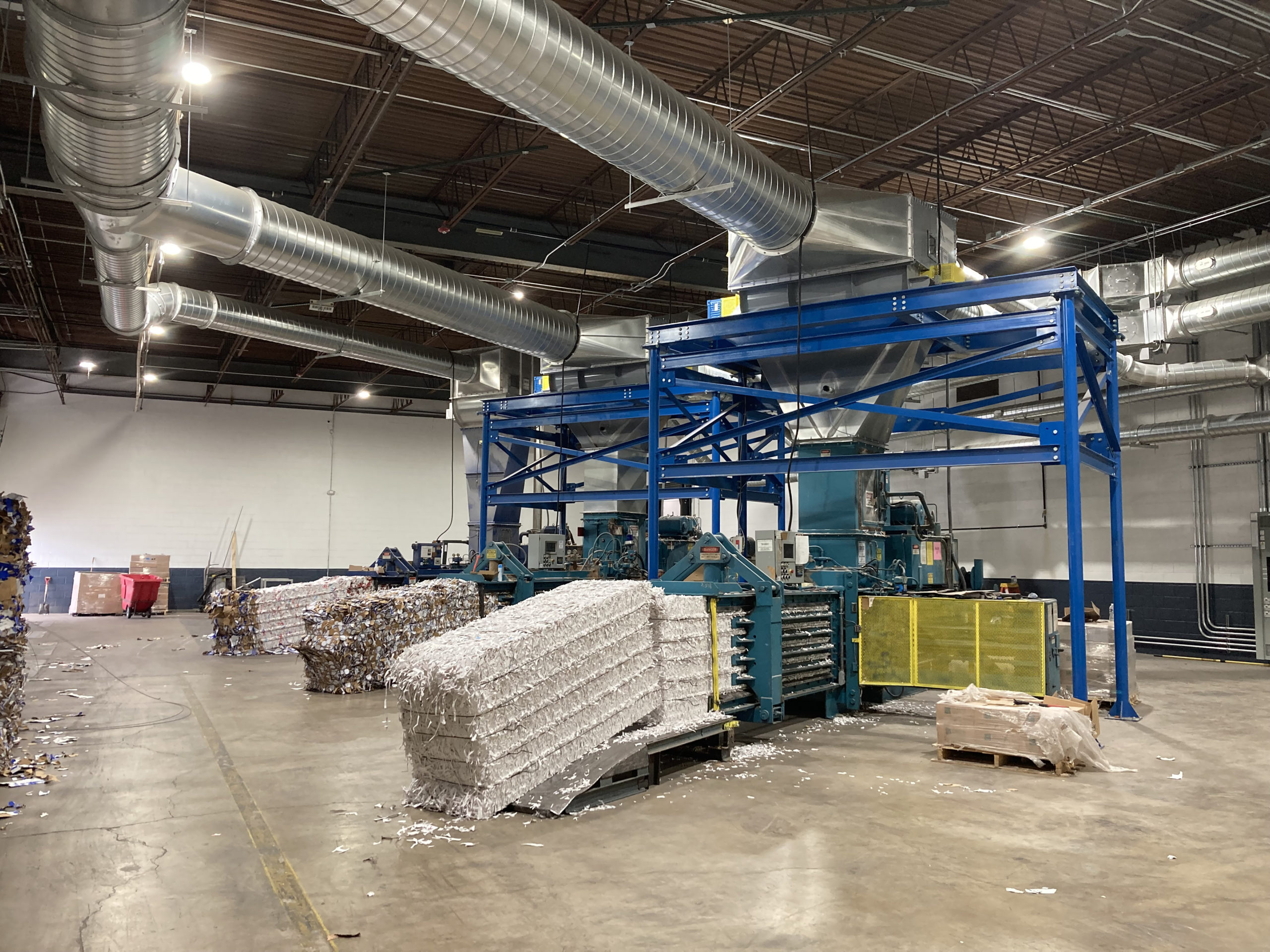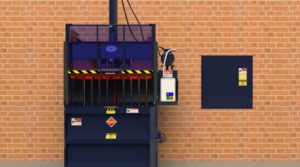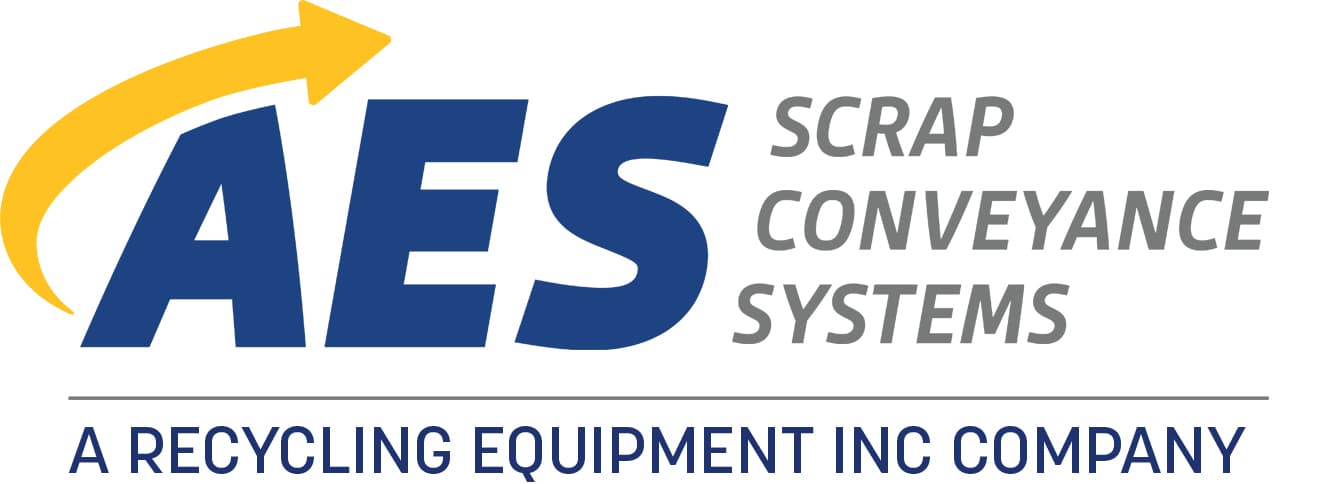
The right set of equipment is integral to the success of any recycling or scrap management operation. Different materials, sizes, grades, and capacities all impact the baler machine selection and purchasing process. If you choose the incorrect baler for your unique operation, you could risk affecting other production machinery and suspend the production process. The experts at AES are happy to advise you and help you choose the right baler for your needs. But first, let’s provide a quick rundown on the types of recycling balers and industrial balers available today.
In this blog, we’ll explore what a baler machine is, the distinct types of balers, and their applications.
Ready to upgrade your facility’s scrap management capabilities? Explore our full range of recycling equipment for sale to get started.
What Is a Baler Machine?
A baler machine is a type of equipment that compresses and binds material into bales, or compact bundles of material tightly bound by cords or hoops, to optimize storage and transport. Balers are used in many different industries to process and transport a wide variety of materials including paper, cotton, vegetation, and more.
Types of Balers
Not all balers are created equal. It’s important to choose a baler with the right set of capabilities and features needed for your operation. To understand what may work best for you, it’s important to recognize baling equipment differences.
Vertical Baler Machine

Vertical balers are one of the most prevalent types of balers available. Vertical balers load material from the top and utilize a downward force to compress materials. Because of this, they’re typically smaller than traditional recycling balers and can be used in facilities with limited space and standard eight-foot ceilings.
Top-loading, vertical balers are highly effective and are often much less expensive than their larger counterparts. However, one thing to be mindful of is that they only generate one bale at a time.
Horizontal Baler Machine
In contrast to a vertical baler, a horizontal baler will load material in on one side, compress it using a ram, and then eject finished bales out of the other size. Horizontal balers are significantly larger than vertical balers and can be as large as forty feet long. This larger size enables them to bale more material, making them fit for operations processing substantial amounts of material and waste every month.
Auto-Tie Baler Machine
Auto-tie balers come in single or double ram options and can process cardboard, corrugated materials, and paper. Auto-tie balers operate just like horizontal balers, but they take processing a step further and automatically tie (auto-tie) material after it’s baled. This features makes auto-tie balers are among the most efficient types of baler machines, making them a good option for companies regularly requiring large capacity baling solutions.
If your production requirements are greater than 150 tons per month, you may want to consider investing in an auto-tie baler.
Two-Ram Balers
Two-ram auto-tie balers feature two rams and are best suited for organizations dealing with large quantities of recycling and scrap. One ram gathers and compresses material, while the other ejects it and ties it into a bale. Two-ram balers have large openings to collect more material and are efficiently designed to handle a range of materials, such as cardboard, scrap metal, plastic, and textiles, among others.
Closed-Door Baler Machine
Due to their closed-door design, closed-door balers create dense bales. The door at the end of the bale chamber acts as a wall, allowing the baler to push material against it, resulting in compact and dense material bales. Conveyor belts or cart dumpers usually function as feeding systems for closed-door balers, providing a steady stream of different material to process.
Once the material has been compressed, bales within the closed-door baler are ejected from the door for efficient removal. With a wide feed opening, closed-door balers accommodate a broad range of materials and sizes, which can make them useful for facilities that need to process many different types of recyclables or waste.
Specialty and Custom Balers
Even with the many industrial baler machine options available, not all of them will be able to accommodate the types and sizes of materials needed. That’s where specialty and custom baler solutions come in. Specialty balers exist for a diverse array of applications and can process unique materials like tires, closing, storage drums, and much more.
Certain manufactured products or types of waste can be more challenging to bale and may necessitate specific baling chamber liners or rams. If your facility needs a baler for a more nontraditional application, contact AES to discuss specialty and custom baler options.
Uses and Applications of Baling Equipment
Baling equipment is typically used in recycling and waste management operations. However, other businesses and organizations utilize them too, such as:
- Recycling centers
- Warehouses
- Manufacturing facilities
- Waste management operations
- Department stores
- Supermarkets
- Restaurants
- Hotels
- Office complexes
- Schools and universities
- Shopping centers
Learn More About Baler Machines
We’ve covered the most well-known types of baling equipment, and to learn more about our available systems, explore our baler machines.
Not sure what type of baler machine you need? Talk to the experts at AES for innovative solutions that can bring value, efficiency, and increased revenue to your recycling program or waste management operation.
